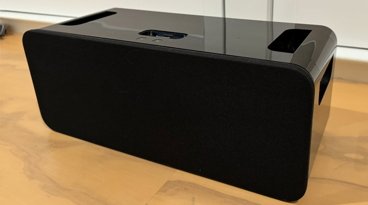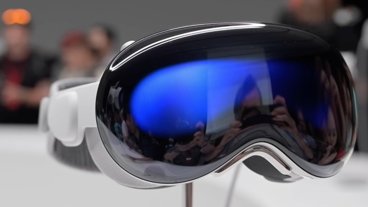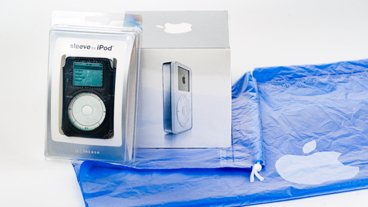Apple working on adding multi-touch to iPod click-wheels
Though sales of the iPod touch have taken off in recent quarters, recent reports suggest that we haven't seen the last of click-wheel-based iPods, the next of which is expected to turn up this fall in the form of a fifth-generation iPod nano with a built-in digital camera and more compact circular scroll wheel.
This new nano could be the first iPod support multi-touch gestures through its click-wheel, according to recent patent filing discovered by AppleInsider this week that details methods for detecting "input gestures that traverse the center of the scroll wheel and to detect multi-touch input."
More specifically, the 38-page filing made just this past September describes a "multi-dimensional scroll wheel" that "can sense a moving object, such as a finger, as it is moved not only in a rotational manner but also in a linear manner across the center of the scroll wheel." This new breed of scroll wheel would also be capable of sensing more than one object at a time, such as multi-finger touch or motion.
"Applications can be enhanced by the improved range of input enabled by the scroll wheel circuitry," Apple explained. "For example, linear motion, such as a swipe across the scroll wheel, can enable an image browsing application to cause images, such as album cover pictures for example, to be transitioned across a screen."
Multi-touch input, such as one finger touching an inner region of the scroll and another finger rotating in the outer region, can also enable a zooming application to cause a displayed image to be zoomed-in or out, depending on the direction of the rotation. Similarly, a pinching or expanding of a user's fingers can enable the zooming application to cause a zooming action.
"The scroll wheel circuitry can also bias the sensor element configuration according to the type of input event expected," the filing adds. "For example, if a particular application permits only linear motion input along a particular axis (e.g., a horizontal or vertical swipe), the scroll wheel circuitry can utilize only the sensor elements arranged along that path to sense for an input event. By using less than all available sensor elements in this manner, the scroll wheel circuitry can achieve power savings."
The filing is credited to over half a dozen Apple engineers, including Lakshman Rathnam, Louis Bokma, Fletcher Rothkopf, Andrea Mucignat, Erturk Kocalar, Benjamin Lyon and Joseph Fisher.
 Sam Oliver
Sam Oliver











 Mike Wuerthele
Mike Wuerthele

 Malcolm Owen
Malcolm Owen
 Chip Loder
Chip Loder

 William Gallagher
William Gallagher
 Christine McKee
Christine McKee
 Michael Stroup
Michael Stroup







